Dracaena Fragrans Explained: Simple Steps to Grow a Healthy Corn Plant
Dracaena fragrans, also referred to as the Corn Plant, is a tropical evergreen with origins in Africa. It has been widely cultivated in Europe since the mid-19th century and in the U.S. since the early 20th century as an indoor ornamental plant. The plant grows slowly, featuring thick, upright stems and long, narrow leaves that resemble corn leaves, giving it a slender yet robust appearance.
With its tall and narrow shape, the Corn Plant is well-suited for indoor environments, typically reaching heights of 4 to 6 feet when grown in a pot. It is sometimes called the "faux palm" due to its resemblance to palm trees. However, if you have cats or dogs, consider another plant, as the Corn Plant is toxic to both types of pets.
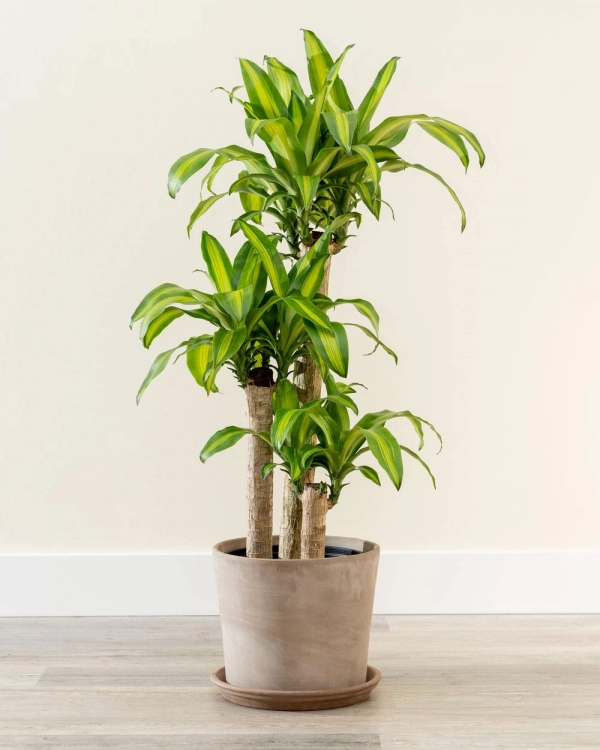
Dracaena fragrans, like other Dracaena species, is relatively easy to care for once planted correctly. Below is a detailed guide to help you keep your Corn Plant healthy and thriving.
General Information about Dracaena fragrans
- Scientific Name: Dracaena fragrans
- Family: Asparagaceae (Asparagus Family)
- Type: Broadleaf evergreen, shrub, or small tree
- Mature Size: Outdoors, it can reach 15 to 50 feet tall; indoors, it typically grows to 4 to 6 feet.
- Light: Prefers indirect light or partial shade. Avoid direct sunlight, which can scorch the leaves.
- Soil: Prefers moist, well-drained, nutrient-rich soil. Ideal soil is a loamy mix.
- Soil pH: 6.1 to 6.5 (slightly acidic)
- Flowering Time: The Corn Plant can flower in late fall and again in late spring. The flowers bloom at night, are white or yellow, and have a pleasant fragrance.
- Hardiness Zones: 10–12 (USDA)
- Native Region: Tropical Africa
- Toxicity: Toxic to dogs and cats
Popular Varieties of Dracaena fragrans
- Dracaena fragrans Massangeana: This variety is the most common, known for its striking yellow-green stripes running down the center of the leaves.
- Dracaena fragrans Lindenii: This variety features yellow-edged leaves instead of the central stripes.
- Dracaena fragrans Victoria: Similar to 'Massangeana', but with smaller, wider leaves that are almost triangular. This variety is rarely found in garden centers.
- Dracaena fragrans Lemon Lime: This variety has leaves with white and yellow stripes around a green-gray center, giving it a distinctive look.
- Dracaena fragrans Limelight: Characterized by shiny yellow-green leaves that gradually turn to a lighter lime green as the plant matures.
Detailed Care Guide for Dracaena fragrans (Corn Plant)
Dracaena fragrans is a popular tropical houseplant known for its resilience and graceful appearance. It is typically grown in large pots and thrives in controlled climate environments. While you can place the plant outside during the summer, ensure it is located in a shaded area with protection from direct sunlight and rain. When outdoor temperatures drop below 60°F (approximately 15°C), bring the plant back indoors to shield it from the cold weather.
Here is a detailed guide to help you care for your Corn Plant effectively:
1. Planting Conditions and Environment
- Soil: Use a nutrient-rich, well-draining potting mix. Ensure the soil is not waterlogged, as Corn Plants do not adapt well to overly wet conditions.
- Location: Place the plant in an area with bright, indirect light. Avoid direct sunlight, which can scorch the leaves and cause them to wilt. Indoors, the Corn Plant is best positioned near a window with gentle natural light. Outdoors, it grows best in a shaded area.
- Protection: Keep the plant away from drafty areas, cold windows, and near air conditioning or heating vents. Corn Plants prefer a humid environment, so consider using a humidifier or placing the pot on a tray of water and pebbles to maintain humidity.
2. Light
Corn Plants require indirect sunlight for optimal growth. Insufficient light can cause the leaves to lose their vibrant colors and result in slow growth. Conversely, exposure to direct sunlight can lead to leaf burn. When growing outdoors, ensure the plant is in a shaded spot to protect the leaves from intense sunlight.
3. Watering
Keep the soil consistently moist during the growing season (spring to fall), but avoid overwatering. Reduce watering frequency in late fall and winter, but never let the soil dry out completely. Both overly dry and overly wet soil can cause health issues for the plant. Check the soil moisture regularly by feeling the top layer of soil before watering.
4. Temperature and Humidity
Corn Plants thrive at temperatures ranging from 60°F to 75°F (15°C to 24°C). Avoid exposing the plant to temperatures below 50°F (approximately 10°C) as it can be harmful. If placing the plant outdoors during the summer, bring it back inside before temperatures drop.
The plant prefers a humidity level between 40% and 50%. To increase humidity, use a humidifier or place the pot on a tray filled with water and pebbles, ensuring that the bottom of the pot does not touch the water directly.
5. Fertilization
Fertilize the Corn Plant during the growing season (spring and summer) with a balanced liquid fertilizer every two months. In winter, when the plant is in its dormant phase, reduce or stop fertilizing to prevent overstimulation of growth.
6. Common Issues
- Yellow or Wilting Leaves: This may indicate overwatering or underwatering. Regularly check soil moisture to adjust watering accordingly.
- Leaf Burn: If the leaves are burning, it could be due to exposure to direct sunlight. Move the plant to an area with indirect light or provide shade.
- Slow Growth: Slow growth might be due to insufficient light or nutrients. Adjust fertilizer amounts and ensure the plant is receiving adequate light.
Pruning Dracaena fragrans
Corn Plants have a leaf lifespan of about 2-3 years, after which the leaves may turn yellow and become unsightly. Remove these older leaves to keep the plant looking fresh. If the plant becomes too tall for its space, you can trim the top. This pruning not only helps manage the plant’s height but also encourages new shoots to grow from the cut area, revitalizing the plant and enhancing its appearance.
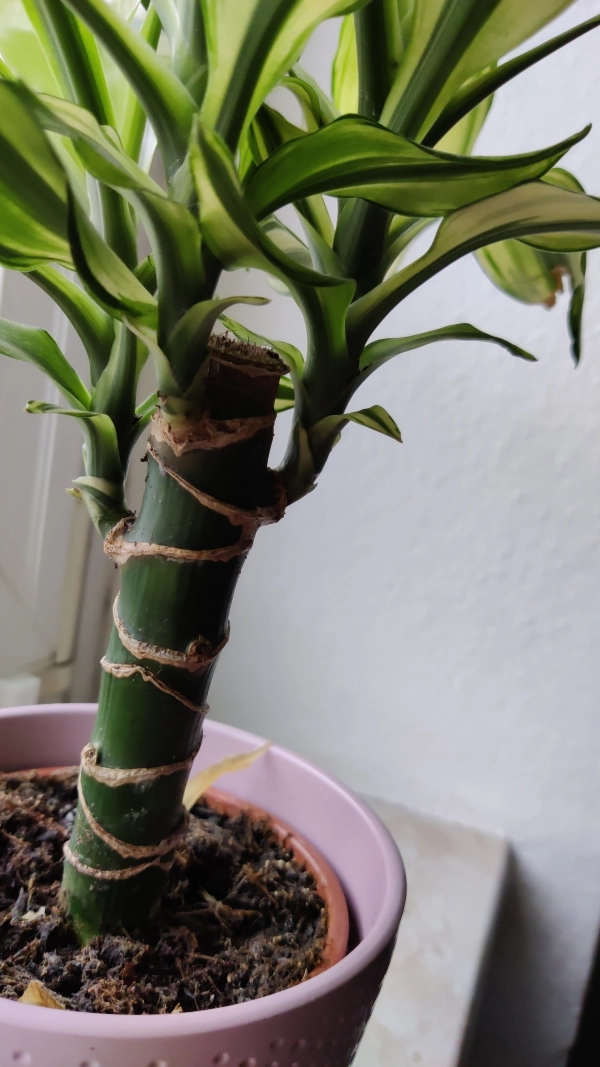
Propagating Corn Plant (Dracaena fragrans)
The best time to propagate Corn Plant (Dracaena fragrans) is during spring or summer. However, if you keep the plant in a temperature-controlled environment, you can propagate it any time of the year. An ideal time for propagation is when the plant has grown too tall for your space. You can cut the top of the plant to create a new plant while rejuvenating the original one.
How to Propagate
- Prune the Top: Use clean pruning shears to cut the top of the plant just below the leaf line, ideally cutting through a stem eye (the white, rough part on the stem). The cutting should be about 8 inches long.
- Water Propagation: Place the cutting in a clean jar of room-temperature water, ensuring that the lower half of the cutting is submerged. Place the jar in a spot with indirect, warm light.
- Root Care: Change the water every few days to prevent algae and bacteria growth. When the roots are about 1 inch long, transfer the cutting to a pot with moist peat-based potting mix to encourage further growth.
- Soil Propagation: Alternatively, you can propagate the cutting directly in soil. Use a moist, rich, and well-draining potting mix and keep the plant in a spot with gentle light. However, water propagation is often preferred as it allows for easier observation of root development.
Growing Corn Plant from Seeds
- Soak Seeds: To improve germination rates, soak the seeds in room-temperature water for 3-5 days.
- Sow Seeds: After soaking, sow 2-3 seeds into a small pot with pre-moistened seed-starting mix. Lightly cover the seeds with a thin layer of soil and place the pot in an area with indirect light, maintaining soil temperatures between 68°F and 80°F (20-27°C).
- Care for Seedlings: Once the seedlings have developed true leaves (usually in 4-6 weeks), transplant them into a larger pot with potting mix.
Potting and Repotting Corn Plant
Repot the Corn Plant every 1-2 years to provide it with space to grow. Choose a pot that is about 5-7.5 cm larger than the previous one. When repotting, carefully remove the old soil and gently lift the plant from its current pot. Add fresh soil to the new pot and place the plant in the center, being cautious not to damage the roots. Fill in around the plant with new soil, but avoid packing it too tightly to ensure good drainage.
Winter Care for Corn Plant
When outdoor temperatures drop below 60°F (15°C), bring the Corn Plant indoors to protect it from the cold. If you have planted it outside, you can dig it up and transfer it to a pot to keep indoors through the winter. If you live in a colder climate than USDA Zone 10, the Corn Plant will not survive outdoors. Before the first frost, take cuttings or propagate the plant to ensure you have new plants ready for replanting in spring.
Common Pests
Corn Plants can be susceptible to pests such as spider mites, scale insects, and mealybugs. These pests can damage the leaves and make the plant look unhealthy. Check the leaves regularly for small insects and signs of damage. To prevent and manage pests, clean the leaves frequently with a damp cloth to keep the plant healthy and vibrant.
Toxicity Warning for Dracaena fragrans
Dracaena fragrans contains certain toxins that can be harmful to dogs and cats. If ingested, pets may experience symptoms such as vomiting, diarrhea, and, in severe cases, serious health issues. Therefore, if you have pets, it is advisable to place the plant in high or inaccessible areas to prevent direct contact with the plant.
Growing and caring for Dracaena fragrans not only adds a refreshing aesthetic to your living space but also helps in air purification and creates a relaxing atmosphere at home. However, be mindful of the surrounding environment and pet safety when deciding to grow this plant.
Tags: Indoor Ornamental Plants | Outdoor Ornamental Plants | Bonsai Plants | Aquatic Ornamental Plants | Miniature Ornamental Plants |











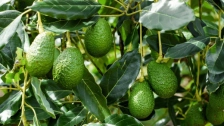
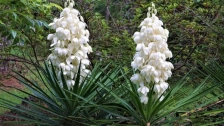
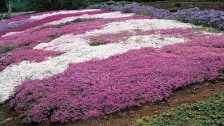






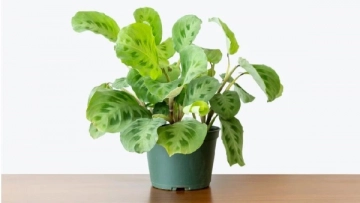

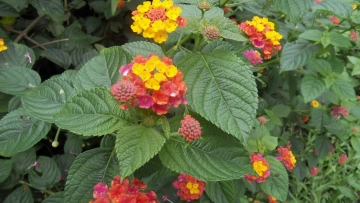
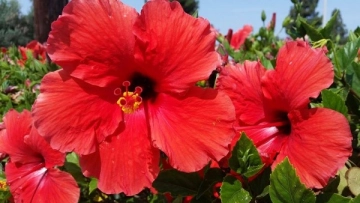
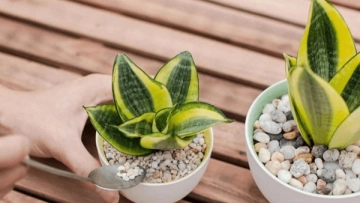
Noha Moustafa
September 26 , 2024